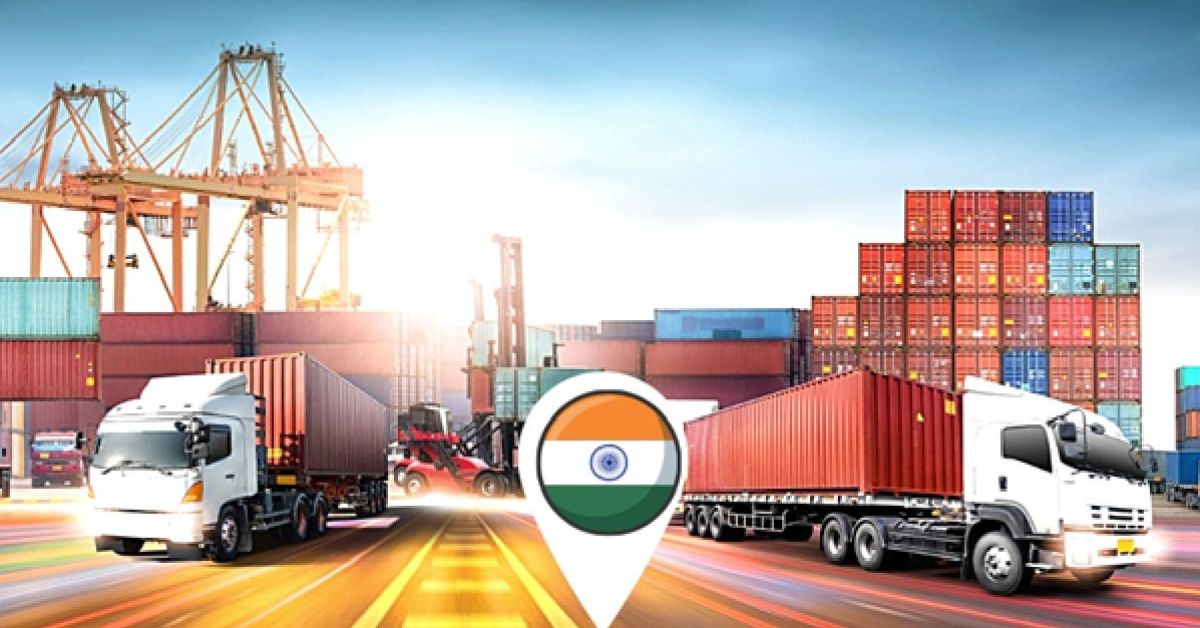India has achieved a major milestone in its ongoing efforts to build a more competitive and efficient logistics ecosystem. According to a new report prepared by the National Council of Applied Economic Research (NCAER) for the Department for Promotion of Industry and Internal Trade (DPIIT), the country’s logistics cost was 7.97 per cent of gross domestic product (GDP) in 2023–24.
This figure, formally released through the “Assessment of Logistics Cost in India” report by Union Commerce and Industry Minister Piyush Goyal, represents the first comprehensive and scientifically derived estimate of logistics costs for the country.
A break from the past
Until now, India’s logistics costs were often cited at 13–14 per cent of GDP, figures largely based on external studies or fragmented data sources. These numbers, while frequently quoted in global comparisons, painted a picture of India as a high-cost logistics economy relative to developed nations, where logistics typically accounts for 7–8 per cent of GDP.
The latest DPIIT-backed assessment brings much-needed clarity. With a robust methodology grounded in detailed data, the NCAER study now places India’s logistics performance closer to global benchmarks. This recalibration has significant implications—not only for how India is perceived internationally but also for policy formulation and business strategies.
Gradual moderation of costs
The report notes that logistics costs in India have been rising at a slower pace over the last five years. This moderation is attributed to a series of large-scale policy reforms and infrastructure development initiatives undertaken by the government.
Among the most impactful interventions are:
- PM Gati Shakti National Master Plan, a digital platform integrating 16 ministries to coordinate infrastructure projects.
- Dedicated Freight Corridors (DFC), designed to shift bulk cargo from road to rail, reducing transit times and costs.
- Sagarmala Project, which focuses on modernizing ports, improving coastal shipping, and enhancing hinterland connectivity.
- Integrated Check Posts (ICPs) at land borders, streamlining cross-border trade and cutting delays.
- Unified Logistics Interface Platform (ULIP), enabling real-time data sharing across supply chain stakeholders to eliminate inefficiencies.
Collectively, these initiatives are beginning to reshape India’s logistics landscape, improving efficiency while lowering costs.
Why logistics costs matter
Logistics costs are a critical determinant of a country’s economic competitiveness. High logistics costs translate into higher product prices, reduced export competitiveness, and lower margins for businesses. For India, a nation aspiring to become a $5 trillion economy and global manufacturing hub, reducing logistics costs has been a long-standing priority.
By bringing logistics costs closer to the global average, India strengthens its attractiveness as a manufacturing and export base. Lowering these costs also benefits domestic producers and consumers by reducing supply chain inefficiencies and ensuring faster, more reliable deliveries.
A scientific approach
The NCAER-led assessment marks a departure from earlier anecdotal or partial estimates. The study employed a methodology that factors in both direct and indirect logistics costs across different modes of transport and value chains. This makes the 7.97 per cent figure a more reliable benchmark for policymakers and businesses alike.
Commerce and Industry Minister Piyush Goyal emphasized this point during the report’s release, noting that India now has a “scientifically derived, evidence-based estimate of logistics costs.” He added that the new data will help guide future infrastructure investments and supply chain reforms with greater precision.
Implications for policy and industry
The report comes at a time when India is positioning itself as a key player in global value chains, especially under the Make in India and Production-Linked Incentive (PLI) schemes. Reducing logistics costs directly supports these ambitions by enhancing India’s export competitiveness.
For industries such as textiles, pharmaceuticals, automotive, and electronics—where cost structures are highly sensitive to logistics—this reduction can make a decisive difference in winning global orders.
Furthermore, the clarity provided by the report helps private sector companies plan supply chain strategies with better alignment to actual costs, rather than relying on outdated or inflated figures.
Looking ahead
While the report provides encouraging news, the government has reiterated its commitment to further reducing logistics costs. India’s National Logistics Policy (2022) has already set ambitious targets, including bringing logistics costs down to a level comparable with global leaders.
Future priorities include:
- Expanding multimodal logistics parks (MMLPs) across the country.
- Enhancing digital platforms for greater visibility and predictability in cargo movement.
- Accelerating completion of dedicated freight corridors.
- Improving first- and last-mile connectivity to rural and semi-urban production centers.
A transformational shift
The 7.97 per cent logistics cost estimate is more than just a statistic—it is a signal of the structural transformation underway in India’s supply chain landscape. With policy reforms, infrastructure investments, and technology adoption converging, India is on track to build one of the most efficient logistics ecosystems among emerging economies.
As global manufacturers continue to diversify supply chains away from traditional hubs, India’s ability to offer competitive logistics solutions will play a decisive role in capturing a larger share of international trade.
In this context, the DPIIT’s new report is not only a milestone in measurement but also a roadmap for further reform—ensuring that logistics becomes a driver, rather than a drag, on India’s growth journey.









